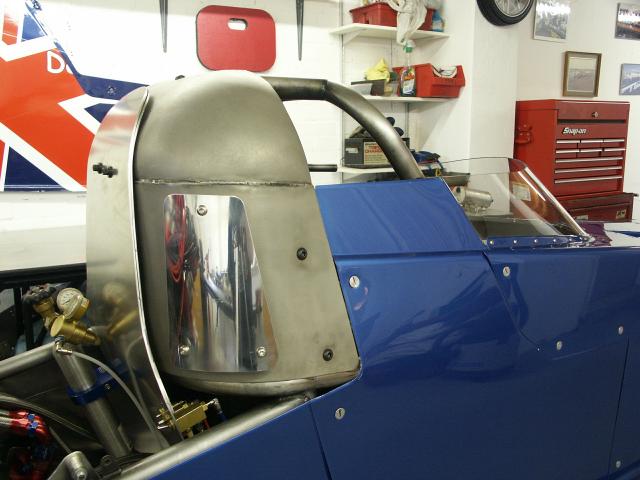Slippery Top Fuel?
Discussion
Any of u guys know if the regs permit any body panels behind the cockpit to clean up the airflow around the motor and backend of top fuel cars. I don't mean any of those low tech. things that were tried back in the 70's - just strikes me that "only" gaining 60 or 70mph in the second half of the track could be improved by cleaing up the airflow? I know that huge amounts of down force are needed from the enormous air damn rear wing to stop loss of traction but has there been any recent research in the states on the aerodynamic front?
TopFuelNitroHead said:
Any of u guys know if the regs permit any body panels behind the cockpit to clean up the airflow around the motor and backend of top fuel cars. I don't mean any of those low tech. things that were tried back in the 70's - just strikes me that "only" gaining 60 or 70mph in the second half of the track could be improved by cleaing up the airflow? I know that huge amounts of down force are needed from the enormous air damn rear wing to stop loss of traction but has there been any recent research in the states on the aerodynamic front?
Like already mentioned, barring the monostrut wing, things are pretty much stale on the aero front. Even the new wing design is based more around safety than performance. There was the "streamliner era" at the end of the 80's owing to the success that Don Garlits had with his "spoon-nose" and enclosed cockpit, but none of them worked. Darrel Gwynn, Joe Amato (sold to Butch Blair), John Carey, Dan Pastorini and Gene Snow amongst others, all experimented with various "aero devices" and found the gain negligible next to the substantial increase in weight. One of the most famous examples was Gary Ormsby's Lee Beard-designed streamliner that had the rear end totally encapsulated. After not getting down the track and bursting in to flames a couple of times, the car was shelved.
Apart from the rear wing (mainly the monostrut and triple elements) the last great advancements in aerodynamics were taller noses, and before that the "kick-out" canards. Jim head did some experimenting with his "noodle car" in the early 90's that ditched the rear wing in favour of an enclosed engine and venturi system but it wasn't successful.
Today I'm not sure any form of engine encapsulation actually fits in the rules anymore, such is the fixed spec of a Top Fuel chassis now. I know for certain that any form of "ground effects" are outlawed. Anyone wishing to design something would have to convince the NHRA and SFI of the idea before even being allowed to test at one of their sanctioned tracks.
Rat_Fink_67 said:
One of the most famous examples was Gary Ormsby's Lee Beard-designed streamliner that had the rear end totally encapsulated. After not getting down the track and bursting in to flames a couple of times, the car was shelved.
Funnily enough I was talking about this on Saturday evening watching the 1986 NHRA review. I seem to recall the problem with Ormsby's car was the mag / coil shorting out on the bodywork. I reckon if this hadn't have happened the car may have been more successful.
This might be wrong, but doesn't a nitro engine work better under load? Load in this instance being the aero drag present from elements of the car being exposed.
A couple of newish things implemented in recent years (probably already mentioned), would be the taller injector to grab less disturbed air from above the cockpit shield, which itself now can sport curved plates, similar to those found on Scania trucks etc.
Pic below copyright Eurodragster.com

A couple of newish things implemented in recent years (probably already mentioned), would be the taller injector to grab less disturbed air from above the cockpit shield, which itself now can sport curved plates, similar to those found on Scania trucks etc.
Pic below copyright Eurodragster.com

Gassing Station | Drag Racing | Top of Page | What's New | My Stuff





